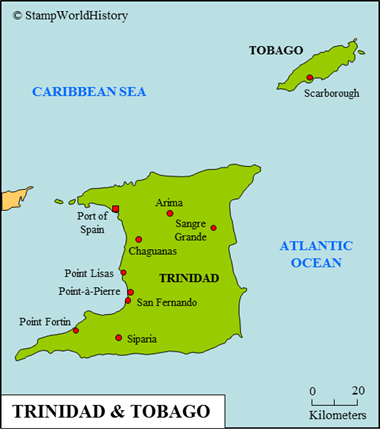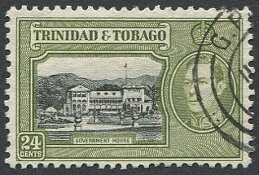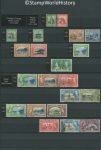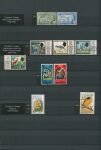
Trinidad & Tobago
British colony

Trinidad & Tobago
Independent
Quick reference
General issues: British colony 1913-1958, Province West Indies Federation 1958-1962, Independent within the British Commonwealth 1962-1976, Republic 1976-Present
Country name on general issues: Trinidad & Tobago
Currency: 1 Pound = 20 Shilling, 1 Shilling = 12 Pence 1913-1935, 1 Dollar = 100 Cents 1935-Present
Population: 345 000 in 1913, 1 341 000 in 1913
Political history Trinidad & Tobago
Trinidad & Tobago is located in the Caribbean – for the exact location, please refer to the map of the Caribbean. The country consists of the islands of Trinidad and Tobago, both part of the Lesser Antilles. Trinidad was, prior to colonization, inhabited by the Amerindian Arawak and Carib peoples. The first European to explore Trinidad was Christopher Columbus in 1498. The Spanish settled Trinidad but invested little in the island. The British took possession of Trinidad in 1797 and the Spanish ceded Trinidad to the British in 1802. Tobago was, prior to colonization, inhabited by the Carib people. First sighted by Columbus in 1498, the island would not be settled by Europeans until the late 16th century. Having been disputed by several European nations throughout the 17th and 18th centuries, Tobago became a British possession in 1814.
The British administered Trinidad and Tobago as separate colonies until 1889, when Tobago was attached to Trinidad to form the colony of Trinidad & Tobago. At first Tobago remained a distinct political entity, but it came to be fully amalgamated as an administrative district in 1899. While Trinidad, nor Tobago, had a tradition of representative government – which many of the British colonies in the Caribbean did – Trinidad & Tobago would, in the 20th century, move towards independence faster than most of the other British colonies. In 1958, Trinidad & Tobago joined the West Indies Federation – a federation of most of the British possessions in the Caribbean intended to guide the British possessions to independence as a federation. The West Indies Federation, however, was short lived. Upon its dissolution in 1962, Trinidad & Tobago gained independence within the British Commonwealth. In 1976, Trinidad & Tobago was proclaimed a republic that, as such, remains a member of the British Commonwealth until today.
Economically, the Spanish did little to develop Trinidad and Tobago. Plantations were developed from the late 18th and early 19th centuries by the British – sugar cane being the cash crop. To man the plantations, slaves were brought from Africa. After the abolition of slavery in 1834, indentured laborers were brought to the plantations from East India who would become the largest population group. On Trinidad the plantations were be the mainstay of the economy until well into the 20th century. On Tobago the plantations collapsed in the 19th century. Oil was found in 1910 and, currently, the economy is largely dependent on oil and natural gas production – although the government strives to diversify the economy. The two largest population groups are of people of East Indian and of African descent, accounting for 35% and 34% of the population respectively. People of mixed descent constitute 23% of the population.
Postal history Trinidad & Tobago
Trinidad issued stamps as early as 1851. On Tobago, British stamps were used between 1858 and 1860 and, subsequently, the stamps of Trinidad. Tobago issued stamps from 1879 and would continue to do so until 1896, when the issues of Tobago were superseded by the issues of Trinidad. The stamps of Trinidad & Tobago came into use after the full integration of the postal administrations of Trinidad and Tobago in 1913. The first issue of Trinidad & Tobago, in 1913, is of the ‘Britannia’ type – the signature type of Trinidad. In 1917, the War Tax stamps – issued throughout the British Empire – appeared in a range of locally issued varieties. Further issues, in the classical period, are in a style common to the British colonies with themes specific for Trinidad & Tobago. Trinidad & Tobago joined in a number of the omnibus issues for the British colonies. Since independence Trinidad issued a blend of stamps with themes of national interest and themes aimed at the thematic collectors market.
Album pages
← Previous page: TrinidadNext page: Turks & Caicos Islands →




